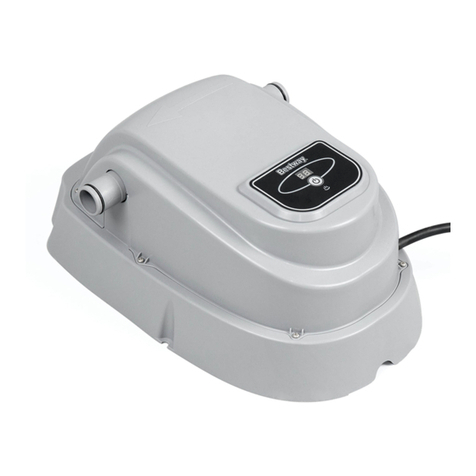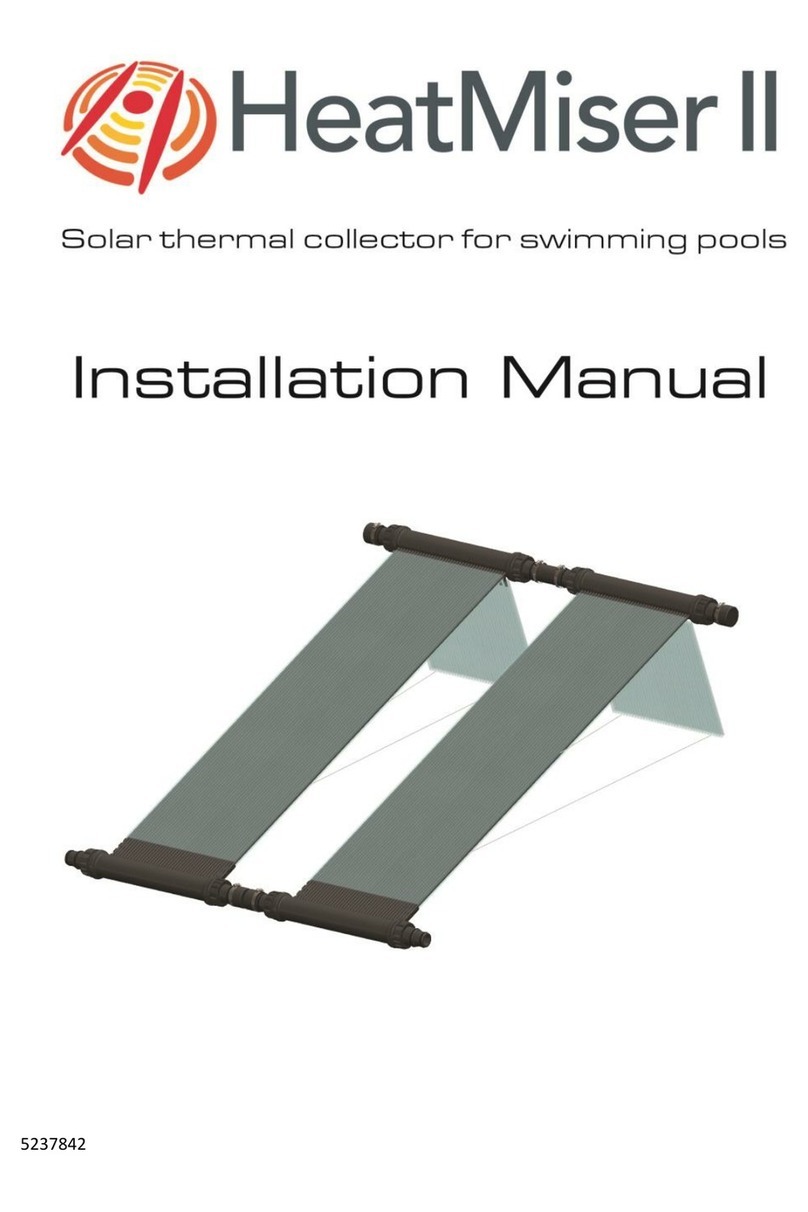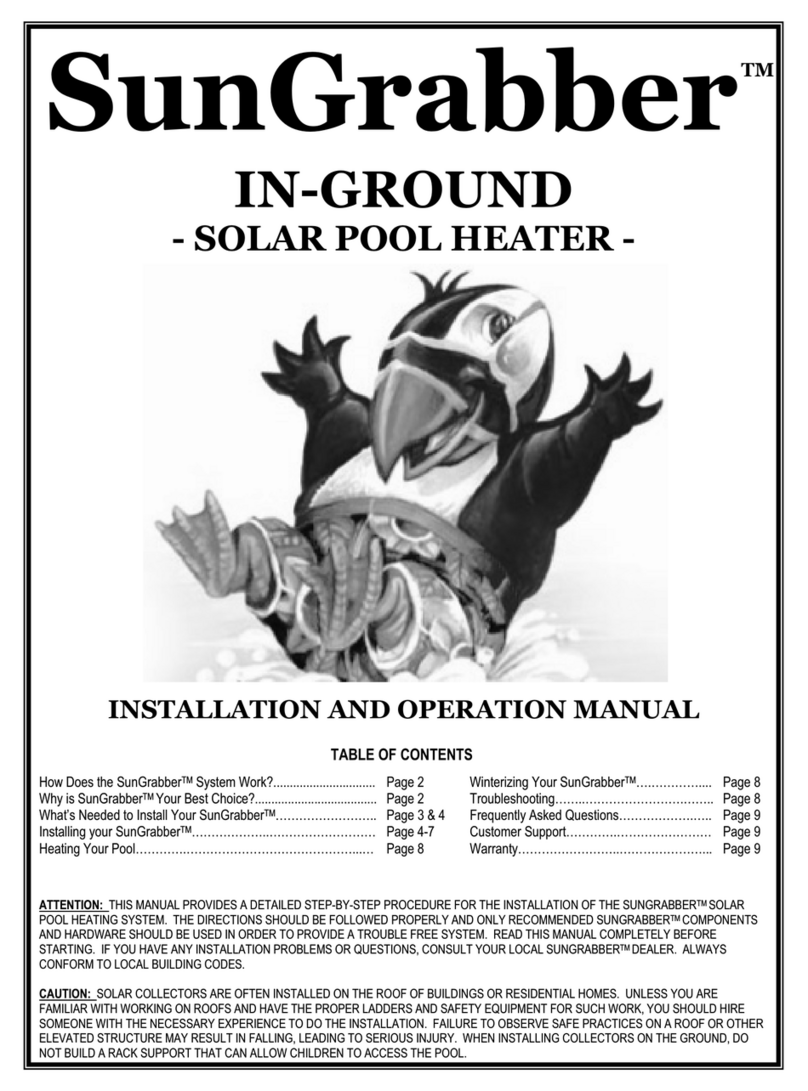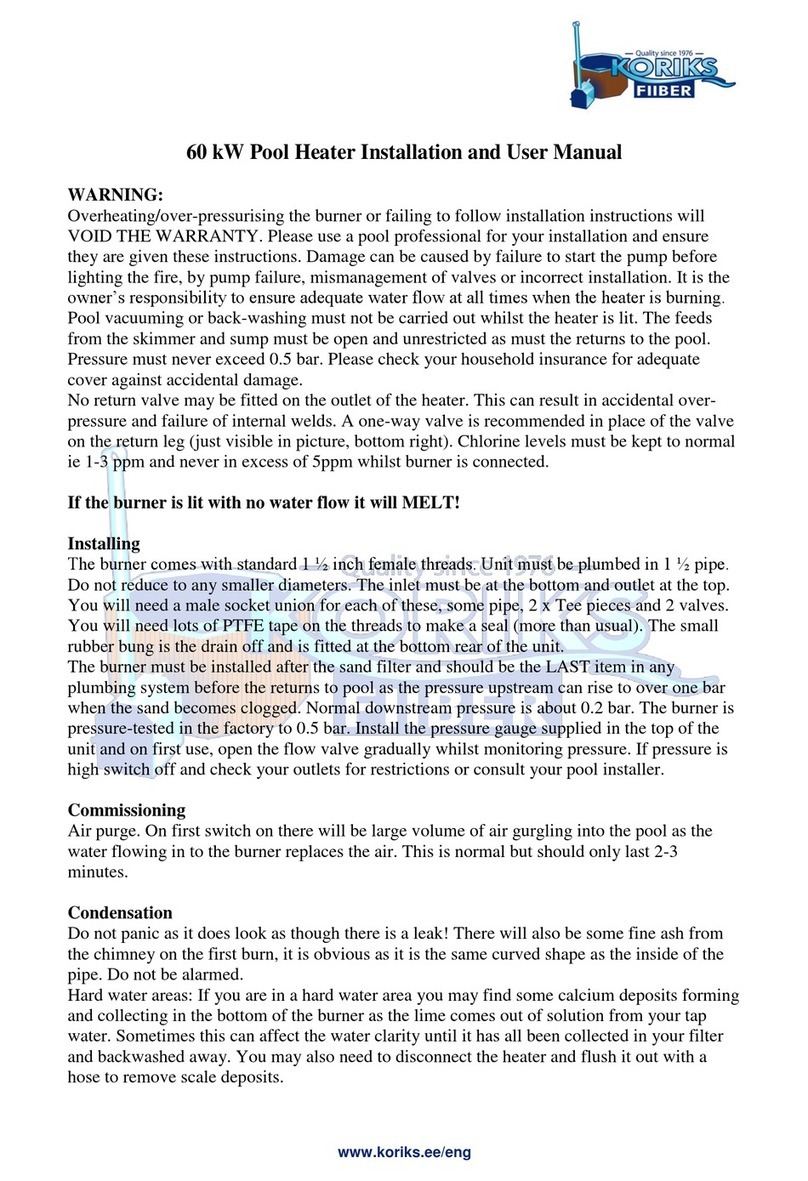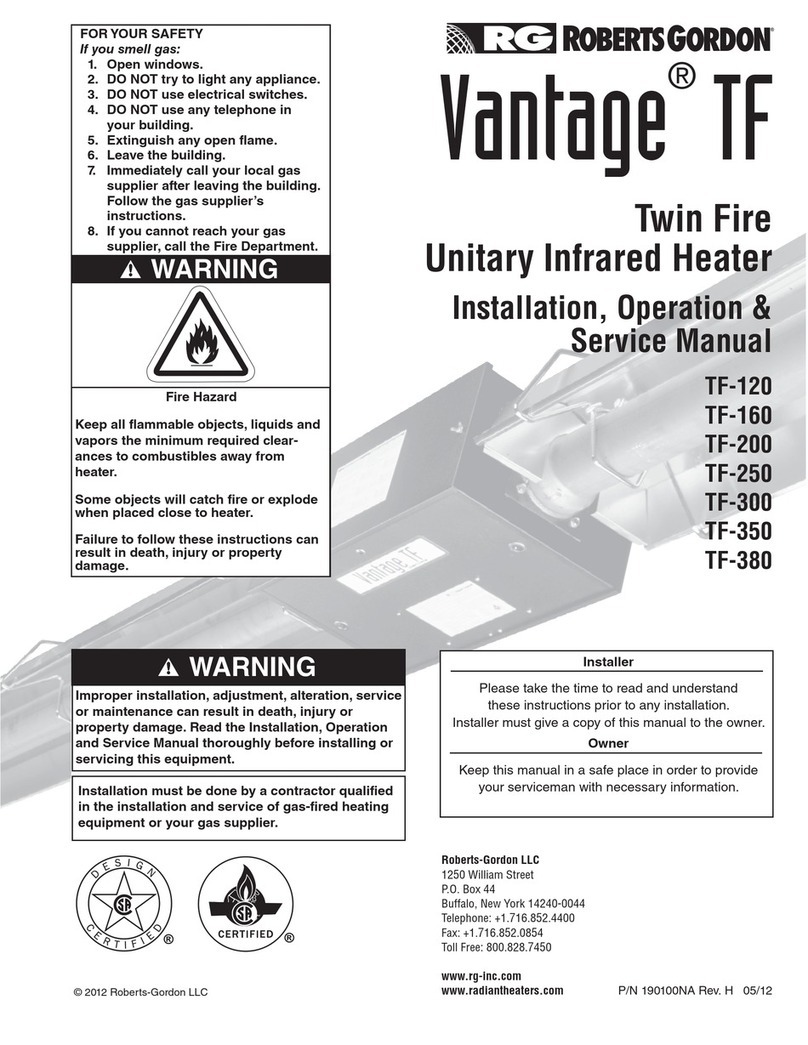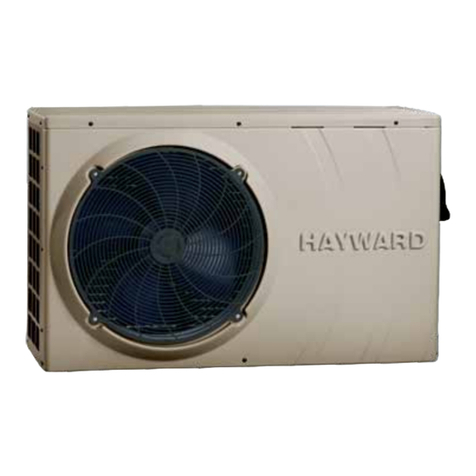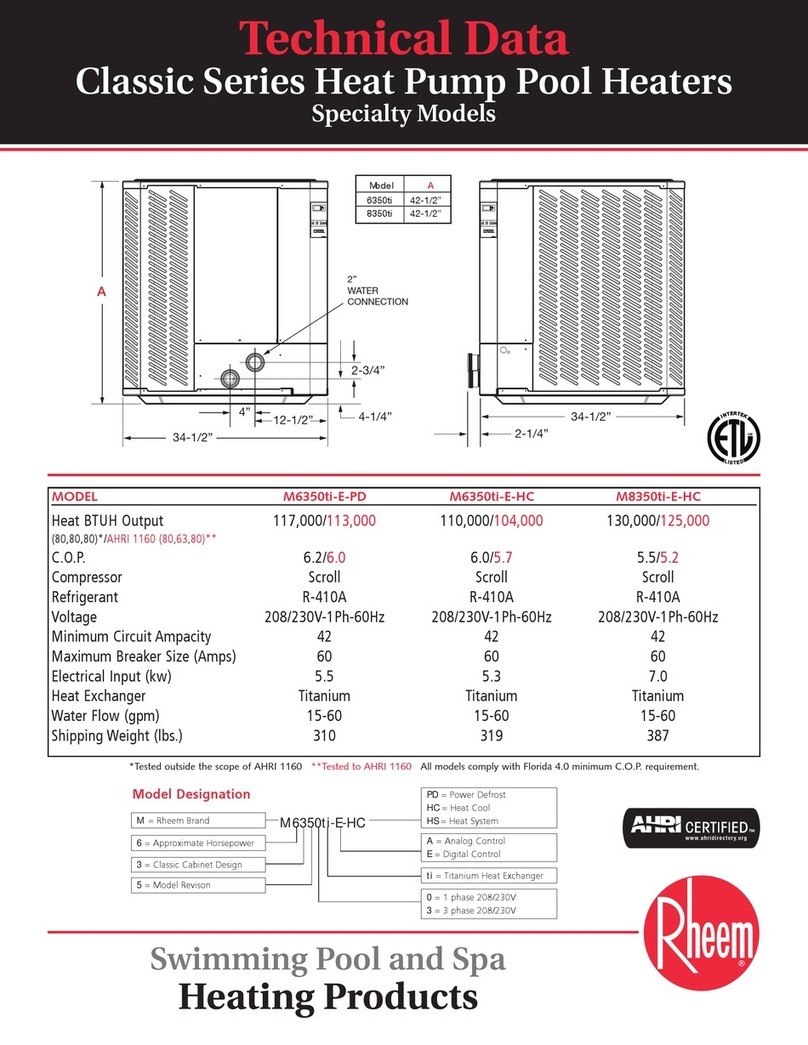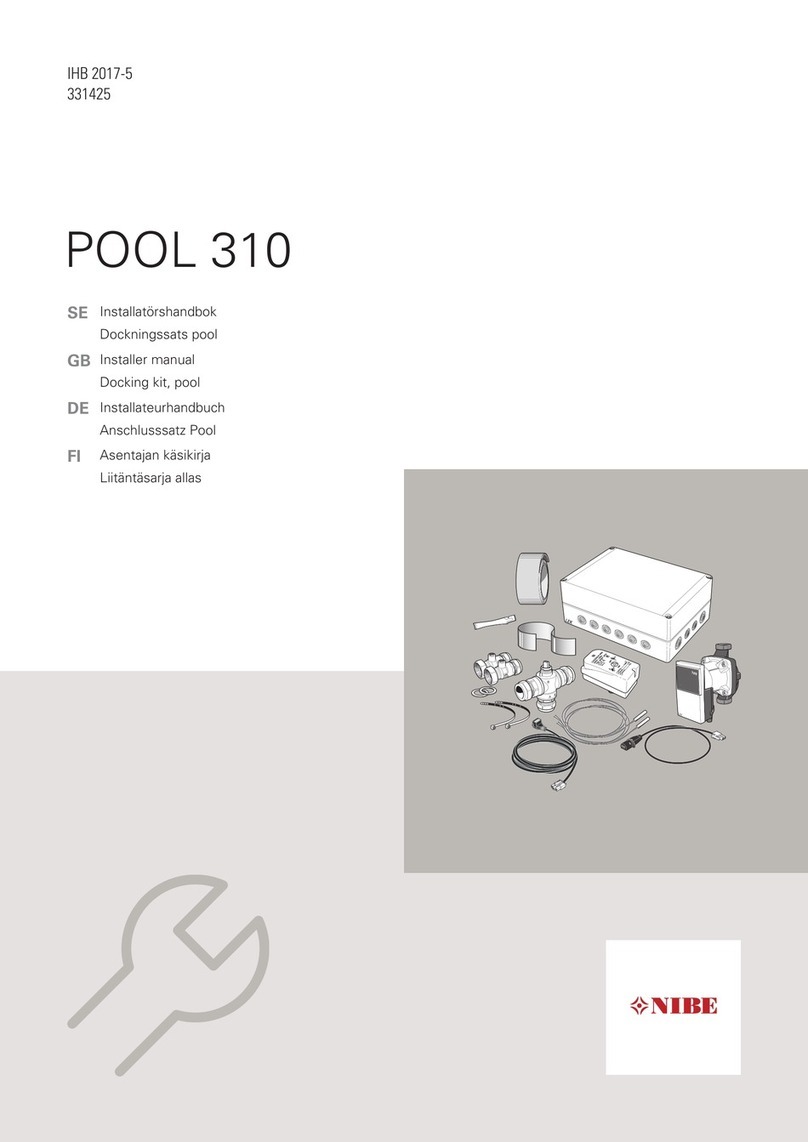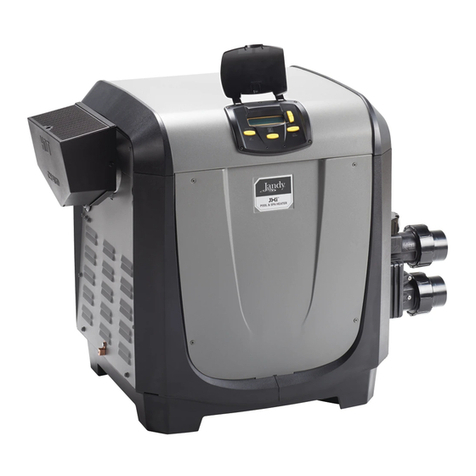
Pentair Water Commercial Pool and Aquatics
Page 8
a Category I vent system, and includes rules and tables
to size these vent systems. If the heater’s vertical vent
system does not satisfy the criteria for Category I
venting, it must be vented as a Category III system.
All PowerMax vent systems which discharge
horizontally (without the use of a power venter) are
considered Category III vent systems.
2.2.2 Category I Vent
When vented as a category I appliance, the vent
system must conform to the National Fuel Gas Code
(American National Standard Z223.1-Latest Edition)
in the U.S., or in Canada, to CSA B149.1 (latest
edition). The vent system must be sized and installed
for a Category I Fan-Assisted Appliance.
If chimney height is greater than 25 feet, or if
multiple units are vented into the same vertical vent, a
barometric damper must be installed on each
appliance, such that the flue draft does not exceed
(negative) 0.1" w.c.
If using a power venter for any type of Category
I venting, the draft should be set between (negative)
0.01 and 0.10" w.c.
2.2.3 Common Venting Systems
PowerMax units are Category I fan-assisted
when vented vertically and adhering to all applicable
codes. PowerMax units are not allowed to be vented
into a common horizontal vent system, unless a
properly-sized vent fan is used, and the common vent
system is properly designed by the vent fan
manufacturer or a qualified engineer. When common
venting PowerMax fan-assisted heaters with other
appliances through one shared vertical duct called a
“common vent”, special care must be taken by the
installer to ensure safe operation. In the event that the
common vent is blocked, it is possible, especially for
fan-assisted devices, to vent backwards through non-
operating appliances sharing the vent, allowing
combustion products to infiltrate occupied spaces. If
the appliances are allowed to operate in this
condition, serious injury or death may occur.
WARNING
Operation of appliances with a blocked common
vent may lead to serious injury or death. Safety
devices must be implemented to prevent blocked
common vent operation. If safe operation of all
appliances connected to a common vent cannot be
assured, including prevention of spillage of flue
gasses into living spaces, common venting should
not be applied, and appliances should each be
vented separately.
It is for this reason that, in addition to following
proper vent sizing, construction and safety
requirements from the National Fuel Gas Code, ANSI
Z223.1 or in Canada, from CSA B149.1 as well as all
applicable local codes, it is required that installers
provide some means to prevent operation with a
blocked common vent. It is suggested that a blocked
vent safety system be employed such that if the switch
from one appliance trips due to excessive stack spill or
backpressure indicating a blocked vent condition, that
all appliances attached to the vent be locked out and
prevented from operating. (Note that the PowerMax
pool heater is equipped with a blocked vent safety
(pressure) switch, as shipped.) As an additional
precaution, it is recommended that a Carbon
Monoxide (CO) alarm be installed in all enclosed
spaces containing combustion appliances. If assistance
is required in determining how a blocked vent safety
system should be connected to a this product, please
call (800)831-7133.
Refer to the installation and operating
instructions on all appliances to be common vented for
instructions, warnings, restrictions and safety
requirements. If safe operation of all appliances
connected to a common vent cannot be assured,
including prevention of spillage of flue gasses into
living spaces, common venting should not be applied,
and appliances should each be vented separately.
2.2.4 Category III Vent
When the PowerMax is vented with horizontal
discharge, it must be installed per this installation
manual and the venting system manufacturer’s
installation instructions. The vent system must be
sealed stainless steel, per table 5.
Route the vent pipe to the heater as directly as
possible. Seal all joints and provide adequate hangers
as required in the venting system manufacturer’s
Installation Instructions. Horizontal portions of the
venting system must be supported to prevent sagging
and may not have any low sections that could trap
condensate. The unit must not support the weight of
the vent pipe. Horizontal runs must slope downwards
not less than ¼ inch per foot (2 cm/m) from the unit to
the vent terminal. Reference Table 2 for the size of the
Category III vent system. Up to three elbows can be
used with 50 linear feet (15.2m) of pipe. Subtract 10
allowable linear feet (3.0m) for every additional elbow
used.
Term Description
Pipe Must comply with UL Standard 1738
such as Type 29-4C Stainless Steel
(either insulated or non-insulated).
Joint Follow vent manufacturer’s instructions
Sealing
Table 5. Required Horizontal Venting Material.
2.3 Locating Vent & Combustion Air
Terminals
